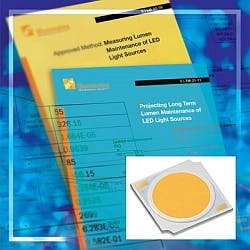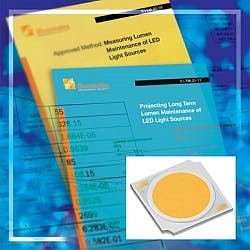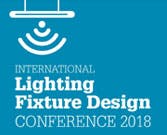LM-80 LED test reports from the Citizen Electronics Laboratory are no longer being accepted for market transformation programs at Energy Star and DLC after Citizen was found to have falsified some test data.
Interested in articles & announcements on packaged LEDs?
This story revolves around the Citizen lab falsifying IES (Illuminating Engineering Society) LM-80 test reports. LM-80 is a test standard that enables product developers and even lighting specifiers/designers to understand the basic performance characteristics of an LED as a light source. We have extensive coverage of the creation and evolution of the LM-80 standard over the last decade. Independent testing labs such as UL and Intertek can be accredited to perform LED testing; most LED manufacturers have also had internal labs accredited for testing and, as a matter of course, perform LM-80 tests on every new packaged LED brought to market.
Just over a month ago, a story came to light indicating a problem with the Citizen lab. Initially, the website The Japan Times broke the news and reported the resignation of top executives at the Citizen Electronics Company as a result of the impropriety. The Edison Report website also covered the report from Japan but reconciled that the errors in the testing and reporting were slight and would not have significantly impacted product performance expectations.
We have been unable to fully discover the depth of the deception or the potential impact on the SSL market. But clearly the EPA and the DLC have decided that there is significant concern over the actions of the lab. Essentially rendering new products from lighting manufacturers as ineligible for rebates is a substantial action. Those affected manufacturers stand to lose significant market share and revenue. The impact will most like be greatest in the directional lamp and luminaire market where chip-on-board (COB) LEDs are widely used and Citizen is a top supplier by volume on COB LEDs.
The DLC posted its statement on the matter on the organization’s website, although with that coming during the massive Light+Building (L+B) exhibition in Frankfurt, the news was overwhelmed to a degree. The EPA directly distributed its message to all Energy Star Partners.
The exact situation is as follows. The Energy Star program sets a range of photometric requirements in terms of efficacy and lumen output for specific product types such as downlights, accent lights, portable desk lamps, and many more categories. To gain Energy Star status, a lighting product must meet those minimum requirements along with other elements of the program. Lighting manufacturers have two options in terms of proving photometric compliance. One is based on an accredited LM-80 report and TM-21 projections on the LEDs used in the product. That data is generally readily available to lighting manufacturers that buy packaged LEDs from major vendors. The LED manufacturers perform the minimum of 6000 hours of testing as part of the process of bringing new products to market and there are provisions for shorter testing periods for manufacturers that develop a next-generation LED using the same basic architecture as a prior product.
The second option for proving compliance with Energy Star photometric requirements is for a manufacturer to directly test its lighting product performance based on the IES LM-84 standard either in an internal or third-party accredited lab. But that testing would both be costly and lengthy — taking 6000 hours to complete.
So the EPA has said recognition of the Citizen lab is now suspended. And the DLC requires that LM-80 data come from an Energy Star accredited lab for inclusion on the DLC QPL. In its statement, the DLC said alternatively lighting manufacturers could turn to the LM-84 option discussed above, or could submit the packaged LEDs used in their products to a different lab for LM-80 testing.
Apparently, products that have existing Energy Star and/or QPL status are not being impacted. New products, including those that are in the active submission queue, will not be approved if the LM-80 data came from the Citizen lab, and that effectively means all lighting products based on Citizen packaged LEDs are ineligible for the programs at the moment.
We’d presume that Citizen could take steps to rectify the situation and regain Energy Star recognition. We have not been able to ascertain just how difficult or time consuming that process would be.







